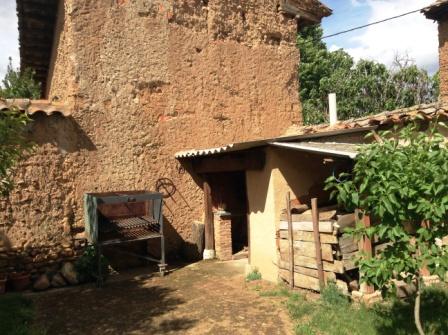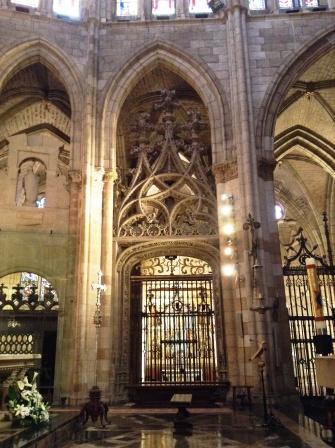

León and its region
We spent a full week in the region of León.
We stayed in the sleepy town of Santa Marina del Rey, not far outside of the
city of León.
The most exciting event in town was watching the cows go out into the fields
in the morning and come home at night!
But the house we stayed in was terrific,
an old place with an enclosed courtyard
typical to the region, which the owner had richly embellished with flowering
plants.






They made their own wine and gave us some
of their homemade orujo, a tasty liqueur fermented in
their still from the leftover wineskins and flavored with herbs (the green one)
and berries (the purplish one).
Santa Marina del Rey sits alongside the
Órbigo River. Nearby is the town of Hospital del Órbigo, which
lies along the pilgrim route
to Santiago de Compostela. So many pilgrims passed here in the Middle Ages that
a bridge was built (and widened as the river
kept changing course). We walked over the bridge and back, so can now say that
we hiked part of the pilgrim route!

We spent two days in the city of León.
Founded by the Romans and named after the legion stationed here, it was
for a while the capital of the Spanish kingdom that became Castile. Roman walls
still enclose most of the old town.
At its heart lies a magnificent Gothic cathedral, built in the thirteenth century.






Not far outside of León are the
medieval monasteries of San Miguel de Escalada and
Gradafés.
The former dates from the tenth century and incorporates Moorish and Visigothic
elements.
The latter is still an active convent, and we got an animated personal tour by a surprisingly talkative cloistered nun.
West of León is the pleasant city
of Astorga. It also retains its Roman walls, and boasts a Renaissance cathedral
with an interesting treasury.
But its real glory is the bishop's palace, a building designed at the end of
the nineteenth century by the quirky Catalan architect, Antonio Gaudí.







West of Astorga lies the rugged region called the Bierzo. We drove one day on its winding moutain roads.


We had lunch in Ponferrada, the only city in the Bierzo region. It is dominated by its medieval castle, built by the Templar Knights.


Another amazing sight in the Bierzo is
called Las Medulas. It is what is left of an ancient Roman gold mine.
Over the centuries, the piles of orange soil left behind have eroded and been
partly covered over by vegetation.
We stopped briefly in the town of Villafranca del Bierzo, also a stop on the pilgrim route to Santiago de Compostela.
The village of Peñalba de Santiago, high up a mountain road and only a few streets big, was astonishingly cute.

Another day we drove to another isolated mountain spot: the caves of Valporquero.



The caves were at the end of a narrow road that hugged the cliffs and climbed up into the mountains. The views along the road were as interesting as the caves themselves.


Click on the bull
to continue onto the next page.
